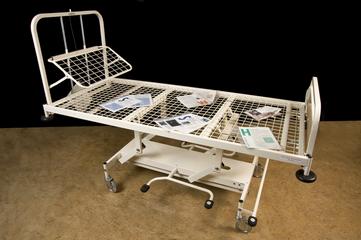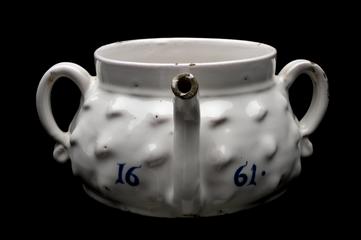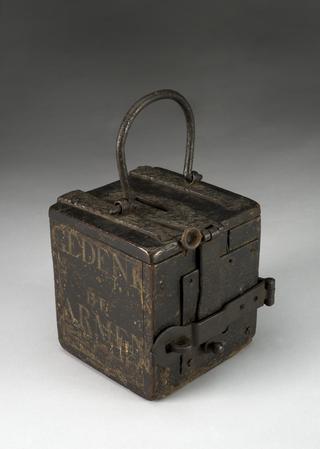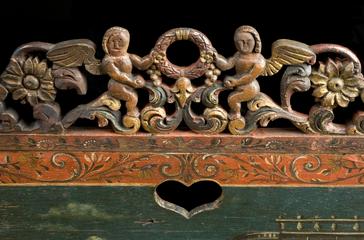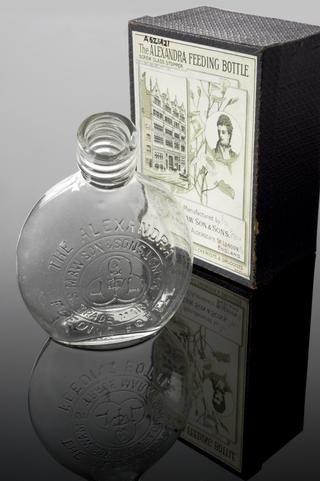
Pram, Letchworth, England, 1901-1970
- Made:
- 1901-1970 in Letchworth




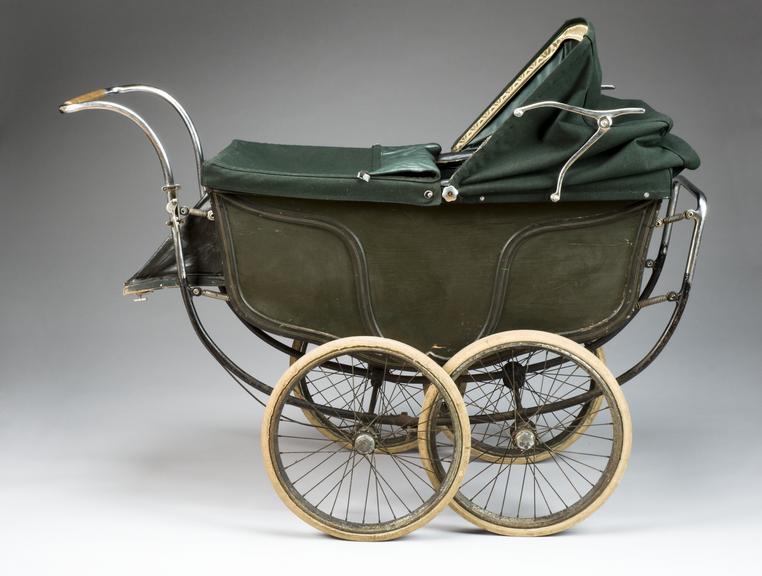
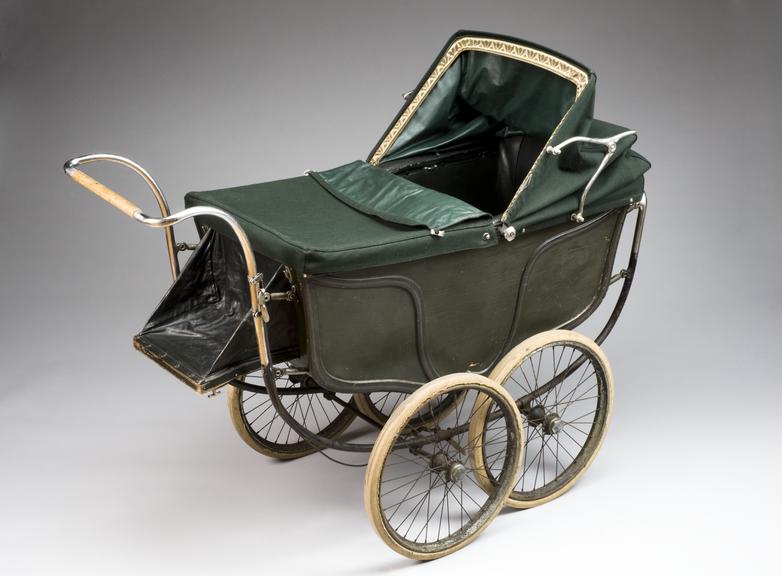

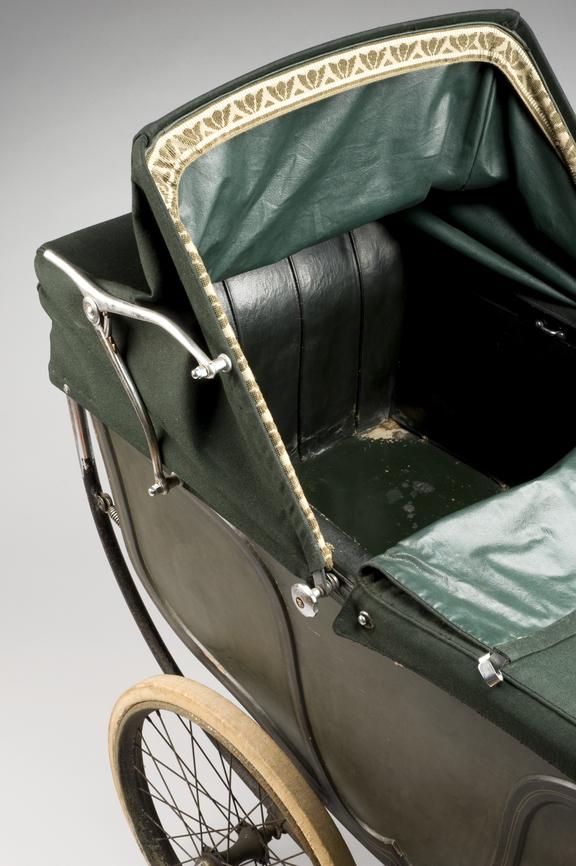
Pram with green upholstery, 20th century, probably English
A perambulator is better known as a pram. It is a type of wheeled baby carriage introduced to Britain in the mid-1800s. The first patent was applied for by Charles Burton in 1853. Queen Victoria bought three of his perambulators for the royal children. This boosted sales and they quickly became popular, particularly among the upper classes. It was thought fresh air was good for children and fleets of prams were wheeled around streets and parks by mothers, nannies and governesses.
The pram is made of leather, metal and wood. It has green upholstery. It was manufactured by Marmet, in Letchworth, England. The pram is extremely large and heavy by today’s standards. This is because it did not need to be collapsible to fit into a car. Also, people tended to have more children much closer in age and a carriage such as this could hold several babies. It could also seat a small child on the fold-down leather chair at the front. A large storage space is underneath where the babies were placed. This stored shopping, or blankets for the children.
Details
- Category:
- Nursing & Hospital Furnishings
- Object Number:
- 1982-561/86
- Materials:
- base, wood, frame, steel and hood, canvas
- Measurements:
-
overall: 1100 mm x 1370 mm x 700 mm,
- type:
- pram
- credit:
- Mirrielees, Esther
